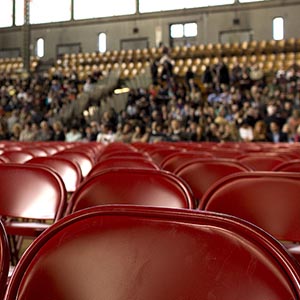
Gestion d'événements

Marketing

Sites internet
Services
About Us
Welcome to ARTFUSION, a company located in Luxembourg whose desire is to « create an event and leave an impression ».
Due to his multifaceted experiences and contacts in the world of art and culture, ARTFUSION can organize for you private events, official inaugurations, expositions, festivals, performances or multi-disciplinary performances.
The main objective of the company is to highlight the artistic and cultural aspects of the event without neglecting the social, aesthetic and environmental aspects.
ARTFUSION understands your desires and intentions and wishes to offer an exceptional moment through a varied and wide choice of international artists.
ARTFUSION has initiated many transnational and intercommunity meetings and has thus a unique capacity to create dialogue between the performing artists and citizens of the world.
ARTFUSION is pleased to work with you to meld audiences and artists together as we create unforgettable moments of exchange and sharing.
Please tell us your objectives and dates so we may best follow your desires with the budget, spaces and audiences that you have in mind.
Photo Editing
 I find that no matter how hard I try to not over shoot an event, I still end up trashing about half of what was shot. It usually isn’t because the shots aren’t good, but because there is something very similar and slightly better in the edit. If you shoot three frames each of every group you photograph at an event(which is pretty typical) and have hundreds files, there’s no reason you can’t cut at least one of the frames for each group, if not two. Your client only needs the cream of the crop since there is only be a limited amount of use for event photos. If there are any VIP’s you might want to leave an extra frame or two in if they are also good, but for the general attendees the top frame of three works best every time. The same rule applies to shots of speakers or the panel at a discussion, edit hard and give the client the cream of the crop.
I find that no matter how hard I try to not over shoot an event, I still end up trashing about half of what was shot. It usually isn’t because the shots aren’t good, but because there is something very similar and slightly better in the edit. If you shoot three frames each of every group you photograph at an event(which is pretty typical) and have hundreds files, there’s no reason you can’t cut at least one of the frames for each group, if not two. Your client only needs the cream of the crop since there is only be a limited amount of use for event photos. If there are any VIP’s you might want to leave an extra frame or two in if they are also good, but for the general attendees the top frame of three works best every time. The same rule applies to shots of speakers or the panel at a discussion, edit hard and give the client the cream of the crop.
Once you get your edit down to the best images, bring your files into your editing software (I am still a diehard Photoshop guy) and crank out the images. The best thing about corporate events is that for the most part everything should be consistent and can be batch processed out in no time. From here, deliver your files, unless a disc is requested, we deliver everything via our PhotoShelter page online.
Special Event Photography may not be the most fulfilling form of photography in the world, but when it comes time to pay the bills, you will be glad that you learned how to execute the photography aspect of them. There are always events going on and opportunities to find work, just remember to dress the part, get photos before the event as well as during it, not over shoot, be in and out of groups and to edit hard with a quick turnaround to keep clients happy.
Qui nous sommes
Artfusion. Le partenaire de l'art, l'art du partenariat.
Artfusion est une agence artistique domiciliée au Luxembourg qui désire « créer l’événement et laisser une empreinte ».
De par ses multiples expériences et contacts dans le monde artistique et culturel, ARTFUSION peut organiser pour vous un événement personnalisé, une inauguration officielle, une exposition, une représentation artistique, un festival, un spectacle multidisciplinaire.
La spécificité de la société est de privilégier dans l’événement la part artistique et culturelle sans pour cela négliger l’aspect social, décoratif et environnemental.
Video Editing
 Video editing is the process of editing segments of motion video production footage, special effects and sound recordings in the post-production process. Motion picture film editing is a predecessor to video editing and, in several ways, video editing simulates motion picture film editing, in theory and the use of linear video editing and video editing software on non-linear editing systems (NLE). Using video, a director can communicate non-fictional and fictional events. The goals of editing is to manipulate these events to bring the communication closer to the original goal or target. It is a visual art.
Video editing is the process of editing segments of motion video production footage, special effects and sound recordings in the post-production process. Motion picture film editing is a predecessor to video editing and, in several ways, video editing simulates motion picture film editing, in theory and the use of linear video editing and video editing software on non-linear editing systems (NLE). Using video, a director can communicate non-fictional and fictional events. The goals of editing is to manipulate these events to bring the communication closer to the original goal or target. It is a visual art.
Early video tape recorders (VTR) were so expensive, and the quality degradation caused by copying was so great, that 2 inch Quadruplex videotape was edited by visualizing the recorded track with ferrofluid and cutting with a razor blade or guillotine cutter and splicing with video tape. The two pieces of tape to be joined were painted with a solution of extremely fine iron filings suspended in carbon tetrachloride, a toxic and carcinogenic compound. This "developed" the magnetic tracks, making them visible when viewed through a microscope so that they could be aligned in a splicer designed for this task.
Improvements in quality and economy, and the invention of the flying erase-head, allowed new video and audio material to be recorded over the material already recorded on an existing magnetic tape and was introduced into the linear editing technique. If a scene closer to the beginning of the video tape needed to be changed in length, all later scenes would need to be recorded onto the video tape again in sequence. In addition, sources could be played back simultaneously through a vision mixer (video switcher) to create more complex transitions between scenes.
